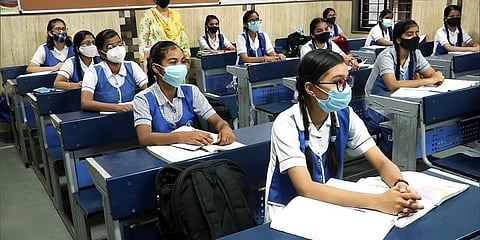

NEW DELHI: Independent studies have noted a spike in rural school drop-out rate and a widening digital divide due to the pandemic, the government said.
Though the education ministry data available till 2019 did not capture the impact of the pandemic in 2020 and 2021, it said, smaller government and independent studies like the Annual Status of Education Report (ASER) 2021 found that non-enrolment of children in the 6-14 age group went up from 2.5% in 2018 to 4.6% in 2021 in rural schools.
The decline was more for boys than girls and highest in the 7-10 age group.
“ASER report also found that during the pandemic, children in rural areas have moved out of private to government schools in all three age groups. Possible reasons suggested for the shift are: shut down of low-cost private schools, financial distress of parents, free facilities in government schools, and families migrating back to villages,” the survey said, adding that there is no government data yet to corroborate the findings.
The school dropout rate at the primary level came down from 4.45% in 2018-19 to 1.45%.
Both boys and girls show a similar fall in the dropout rate. In 2019-20, 26.45 crore children were enrolled in schools.
During the year, schools enrolled about 42 lakh additional children, out of which 26 lakh were in primary to higher secondary levels and 16 lakh were in pre-primary.
However, enrolment dropped from 13.5 crores in 2012-13 to 12.2 crores in 2019-20 at the primary level because of a decline in the number of children in the 6-10 age group.
Highlighting the Annual Status of Education Report (ASER), the survey suggested that shutdown of low-cost private schools, financial distress of parents, free facilities in government schools, and families migrating back to villages could be the probable reasons for the shift from government to private schools.
"Enrolment in the age group of 15-16 years continued to improve as the number of not enrolled children in this age group declined from 12.1 per cent in 2018 to 6.6 per cent in 2021. However, the percentage of children (age 6-14 years) not currently enrolled in schools' category increased from 2.5 per cent in 2018 to 4.6 per cent in 2021," said the survey, underlining the academic disruption caused by the pandemic.
The survey called for enhanced support to the government-run school system like additional aid in terms of teacher-pupil ratio, classroom space, and teaching-learning materials, to absorb students migrating from private schools and from urban to rural areas.
Based on comprehensive official data dating back to 2019-20, the survey highlighted significant improvement in basic facilities in schools from 2012-13 to 2019-20, with medical check-up recording 82.3 per cent as against 61.1 per cent.
In the same period, schools having girls' toilets improved from 88.7 per cent to 96.9 per cent.
Internet facility, though significantly low, still recorded growth from 6.2 per cent to 22.3 per cent.
Noting that school access, dropouts, learning gaps especially for children from marginalised communities have always remained major challenges in education, the survey said that the academic disruption due to the pandemic and the subsequent move to online learning aggravated the existing digital divide and thus access to education.
"Although, the availability of smartphones has increased from 36.5 pc in 2018 to 67.6 pc in 2021, students in lower grade found it difficult to do online activities compared to higher-grade students.
Non-availability of smartphones, non-availability of phones for children to use, and network or connectivity issues were the challenges faced by children.
The survey stated that National Education Policy (NEP), 2020 aims to pave the way for transformational reforms in school and higher education systems to provide quality education to all students with special focus on the marginalised, disadvantaged and underrepresented groups.
The survey pointed out that expenditure on education during the pandemic has increased by 20 per cent as against nearly 73 per cent in the health sector in 2021-22 when compared to 2019-20.
The combined Centre and states expenditure in education increased from 3.54 lakh crore in 2014-15 to 6.97 lakh crore in 2021-22, it said.
As a percentage of GDP, it increased from 2.8 in 2014-15 to 3.1 in 2020-21.
However, as a percentage to total expenditure on social services, it has decreased from 10.8 to 9.7 in this period, the survey said.
"It is difficult to gauge the real time impact of repeated lockdowns on education sector because the latest available comprehensive official data dates back to 2019-20. This provides the longer time pre-COVID trends but does not tell us how the trend may have been impacted by COVID-19 induced restrictions," the survey said.
(With PTI Inputs)